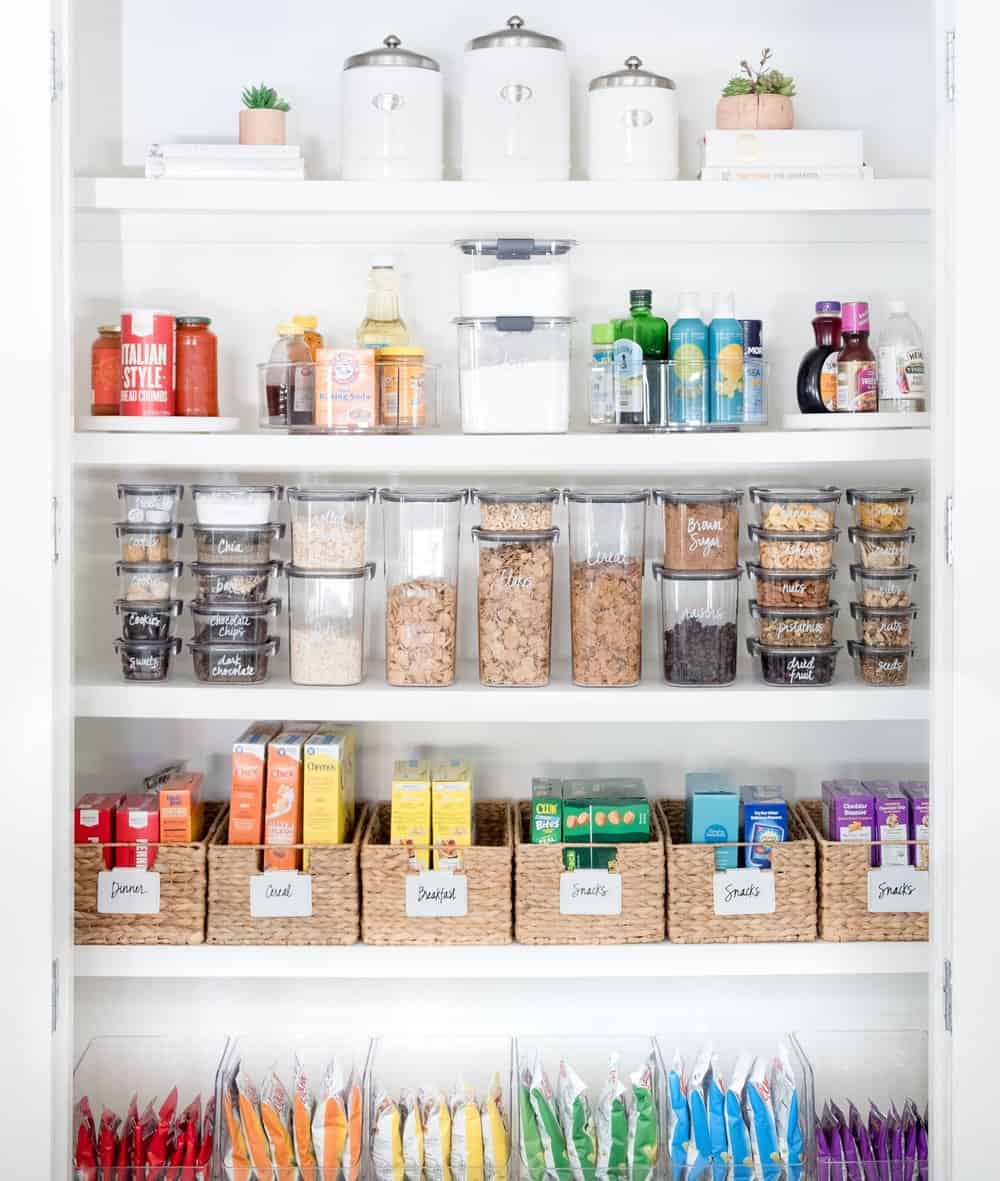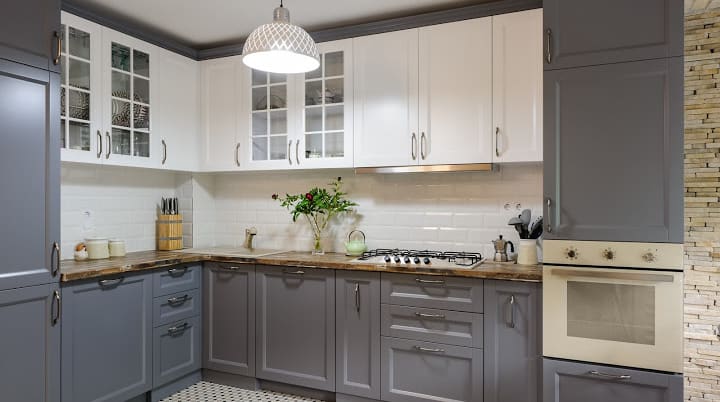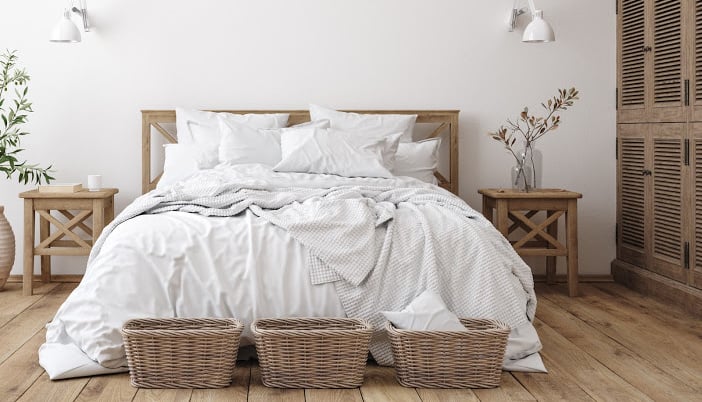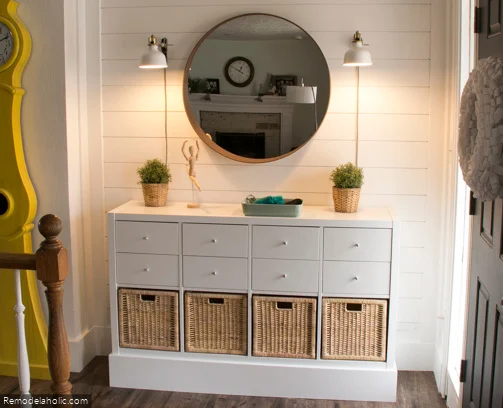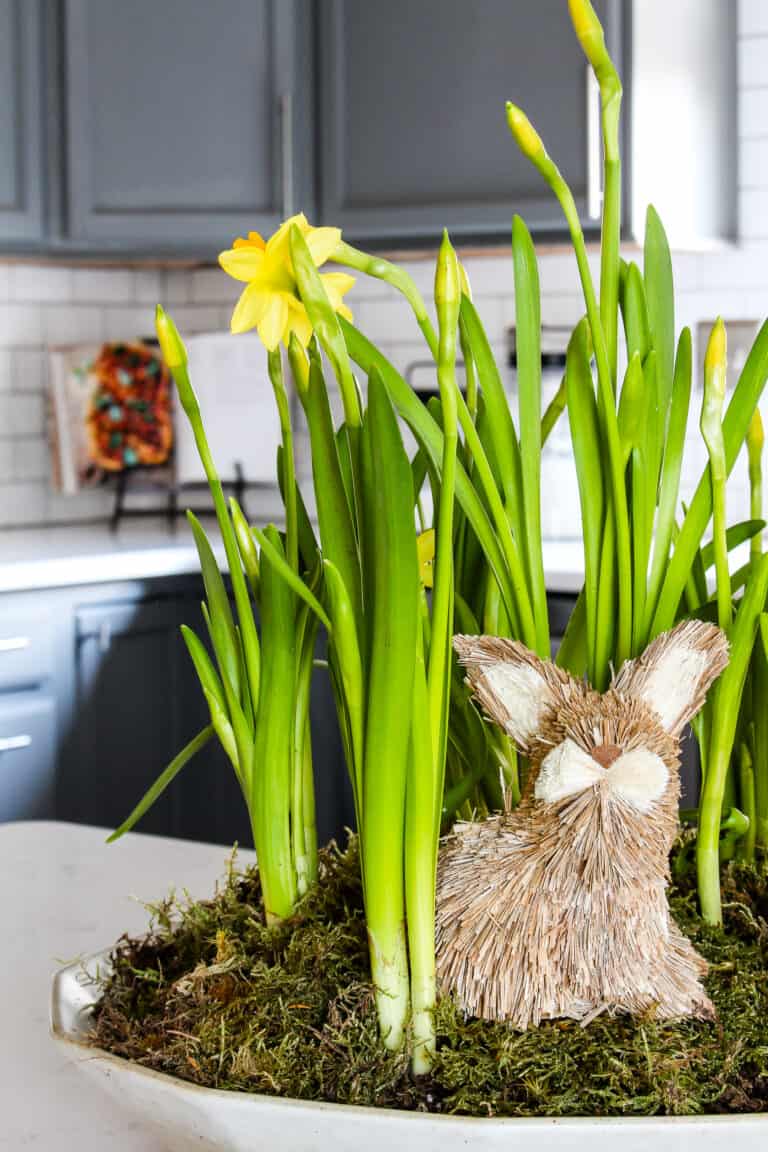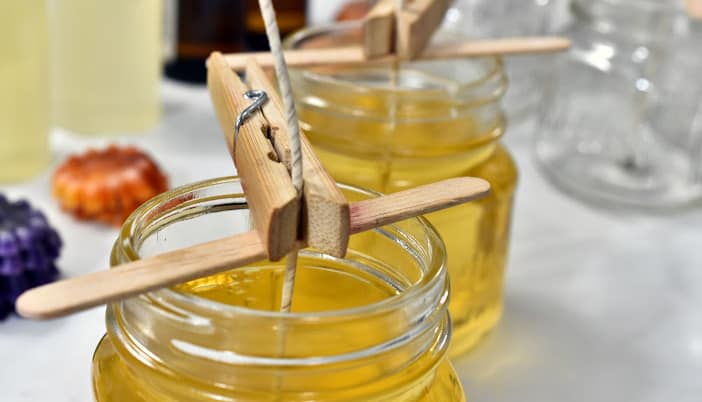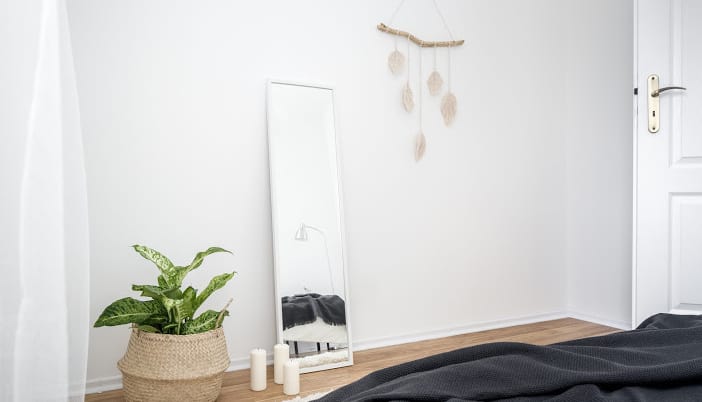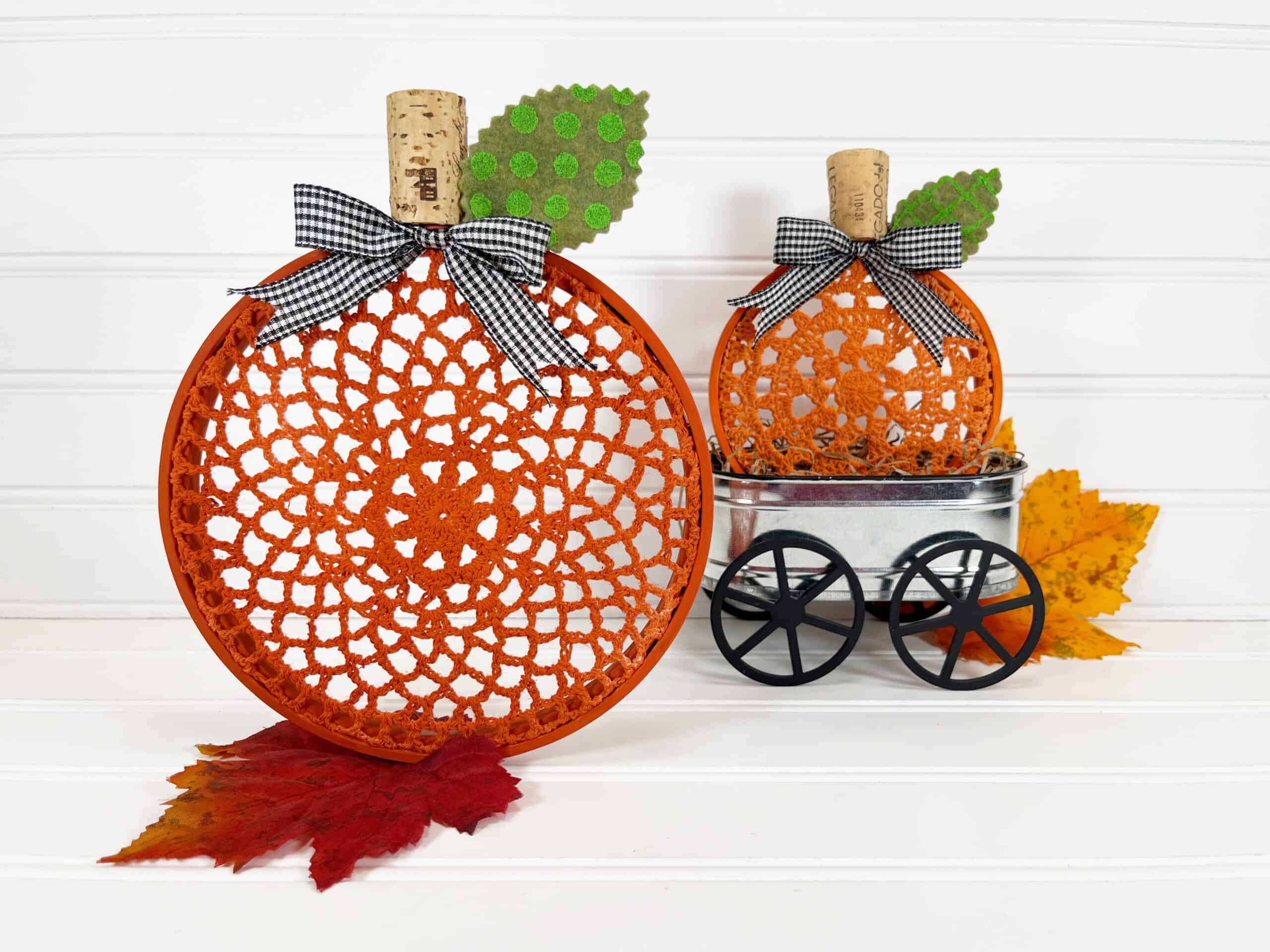Jute vs Sisal – What Makes the Best Rug?
If you are in the market for a natural woven rug, there are two big candidates to consider – jute or sisal. Both are natural materials, but each has its own personality. This plays a big part in the type of rug they create.
This post contains affiliate links. Please read our full disclosure here.
Both tick the box if you are looking for an eco-friendly fiber. Both use sustainable and biodegradable materials. Both are durable and stylish with a range of colors available.
So how do you make a choice? The answer is to get to know both of these natural rug styles a little better.
✅If you’re curious or in a hurry you can check out these jute rug top choices:
BEST JUTE RUGS- TOP CHOICES:
- Bleached Ivory Basket Weave Jute Rug
- Martha Stewart Natural Jute Rug
- NuLoom Ashli Handwoven Jute Rug
- Safavieh Natural Beige Handwoven Jute Rug
- Handmade Flatweave Jute from Wayfair
- Black Geometric Stripe Flatweave Jute Rug
- Safavieh Handmade Cape Cod Boho Jute Rug
- Round Distressed Blue/Orange Jute
This post contains affiliate links. You can read our full disclosure here.
Best Thin Jute Rug: Mabrey Handmade Flatweave Jute Tan Area Rug
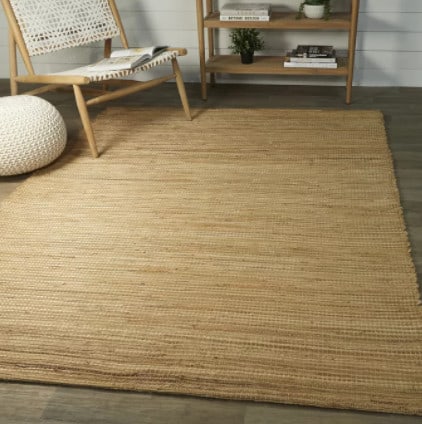
Best Chunky Jute Rug: Safavieh Handmade Natural Fiber Beacon Jute Rug
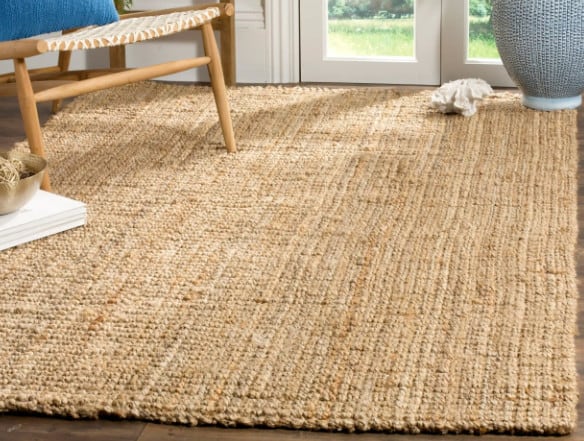
Best Sisal Wool Rug: Fibreworks Wool and Sisal Rug
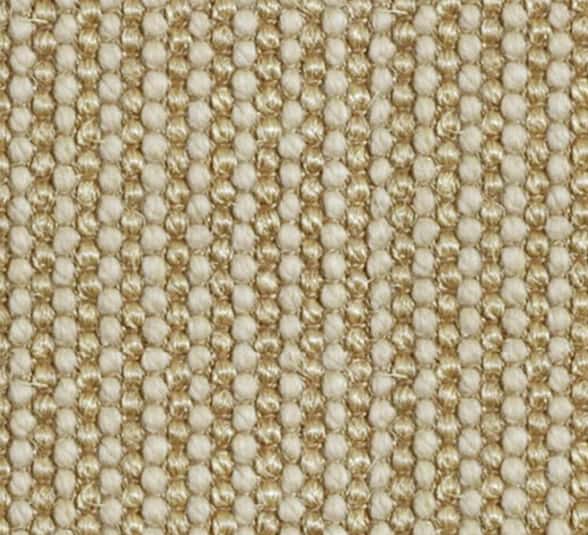
Best Jute Rug For Bathroom: Natural Jute Cotton Round Rug
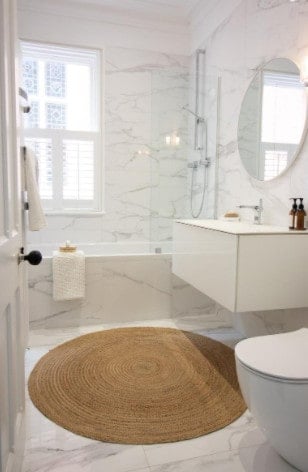
Best Jute Rug for Entryway: Wolsingham Handmade Jute/Sisal
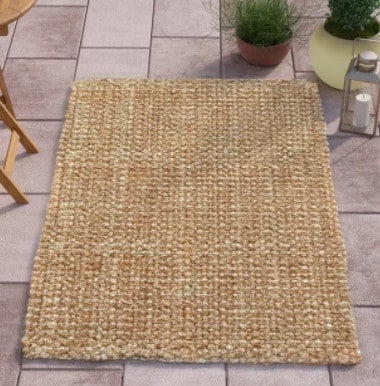
Make Your Own Custom Rug
You can actually create a rug exactly how you want it by visiting this website. They offer jute, sisal, seagrass and a whole range of other materials.
You create the size, material and they will cut and ship it to your door from California- find them HERE.
What is Jute?
We will start with the question of ‘what is jute’ because it helps to understand what makes these rugs unique. Jute comes from the jute plant (Jute cochorus, to give it the Latin name) which comes from Asia, mainly in India and Bangladesh.
Jute is an impressive looking plant that is tall and spindly with white flowers. It comes second only to cotton for the most affordable natural fiber. Parts of the plant also make burlap too, the common sack material.
For colors, the most common shades for jute rugs are earthy and muted shades. The natural color is light brown, but it can be dyed into other shades.
What is Sisal?
Sisal is a fiber made in Mexico from agave leaves – which is the same plant used to make tequila! It is often spun into a yarn-like fiber and if you have a cat, you may have seen this on a cat scratching post.
Sisal has a greater variety of natural colors. It comes in:
- Cream
- Wheat
- Beige
- Shades of grey
Plus, it can be dyed and is better than jute for this, so there’s usually a larger color range. The most common colors for rugs are light and natural shades.
Sisal rugs also have a range of texture styles as well as colors. Two of the most practical are herringbone or a zig-zag style. These tend to create a nice flat weave with less chance of anything catching. Something like a tiger eye weave or boucle is chunkier and more uneven.
Jute vs Sisal – How do They Compare?
Because both of these materials make natural rugs, it is common to see them grouped together. But they create very different products. So how do they compare when you look at jute vs sisal?
One big comparison is the texture of the rugs they create. Jute comes from an area of the world with a monsoon climate. This means that the material made from these plants is softer. You can also get a great chunky jute rug that feels comfortable underfoot.
With sisal, it comes from arid climates and this makes the material tougher. As a result, you find that rugs made with sisal are coarse. But also, very durable, which makes them better suited for high traffic areas of the house. Chunky rugs can be a little harder on bare feet.
How Soft are Jute or Sisal Rugs?
If softness is what you are looking for, then definitely aim for a jute rug. Jute is softer and more comfortable to walk on barefoot, to play on or even for pets. If you have small kids or toddlers on the floor, this is the perfect kind of rug for them.
Sisal rugs aren’t very soft. It is a coarse fiber, and this makes it so durable. What makes it great for high traffic areas also means it is harder underfoot. So, for places where the kids are playing or pets are running around, sisal isn’t the ideal rug to choose.
Where Can You Use a Woven Natural Rug?
Jute and sisal rugs each have a clear personality of their own. This means there are often some best ways to use them around your home.
Where to use sisal rugs
Sisal rugs are tough and durable. This means they are great for high traffic areas of the house such as hallways. They do tend to soften a bit over time and with use but not completely.
They may not be the best choice for areas of the floor that people will be sitting on. So if you have kids playing on the floor, this kind of rug might be a little hard. The same goes for pets – it can feel tough on their paws. That means living rooms and bedrooms aren’t an ideal spot for these natural rugs.
Another thing to know about sisal rugs – they absorb water. That might not hurt when it is a few drops as someone comes in the house. But it isn’t great in kitchens or bathrooms where there’s lots more. So avoid using them in these rooms.
Where to use jute rugs
Jute rugs aren’t as durable as sisal rugs, but they are a lot softer. This means they are lovely to walk on with bare feet or for the kids to play on. This makes jute rugs for living rooms, bedrooms, and family rooms a great idea.
A thin jute rug can be perfect for a dining room, especially if you have a wood floor under. This helps protect the wood floor, reduce the noise, and feels nice underfoot. Chunky jute rugs are brilliant for bedrooms. They have a unique look due to the way they are made that adds real character.
Jute rugs are generally chunkier than sisal. This means they aren’t tough enough for those high traffic areas. Jute rugs for entryways aren’t usually ideal because the material isn’t coarse enough to do a good job.
Area rugs
If you want a really big rug in natural woven fiber, then sisal will be the best option. Sisal is so durable that it works well for area rugs. It also does a great job as a carpet runner as it has a special border to make sure it doesn’t unravel.
You can even go for full sisal carpeting. The only thing you want to watch with this is the maximum size. Most of the time, it comes in 4 meters rolls (or 13’2” if you like). If the room is wider than this, then sisal carpeting isn’t the best bet as it doesn’t seam well. But you could use a big area rug and have another carpet under.
Layering rugs
A big trend is to layer rugs and if you want to go for this style, then both these materials will work well. The trick is to get the right colors and patterns rather than the material.
Let’s say you have a neutral sisal rug and want to add something a bit softer on top. Then a jute rug with a bit of a pattern or a bold color would work really well for this. Don’t go for just a plain one as the two can look a little bland together.
Are These Rugs Easy to Clean?
One thing to know about natural fiber rugs – they aren’t waterproof or stain resistant. That’s because they aren’t treated with any chemicals to make them this way. They can both absorb some water and dry out, but it isn’t ideal to put either where they will get wet a lot.
How to best handle stains
As with most rugs, you want to get onto those stains the moment you see them. Natural materials are absorbent, so they suck up the moisture quickly. As soon as you spot a spillage, grab some plain kitchen towel or cloth to blot it up. If it is something caked onto the rug, scrape it gently with a nail file or a dull kitchen knife to remove it.
If you need to clean up the spill, be careful to make sure your cleaning product has a neutral pH factor. This just means it doesn’t have anything in it that might cause the rug to change color. Test on a small spot off in the corner if you are unsure.
To clean the stain:
- Brush the area with a small amount of the cleaner and lukewarm water. Don’t get it too wet
- Blot with kitchen towel or a plain cloth and repeat until the stain goes away
- If you think it is a bit too wet, use a hairdryer to dry the area out
How to vacuum these rugs
Sisal and jute rug cleaning are quite similar. Both are natural fibers, so dirt doesn’t penetrate or cling to them. Instead, it just sits on the weave and this means the vacuum cleaner is your friend.
Regularly vacuum either type of rug to keep them in top condition. This removes the dirt which can be abrasive to the fibers if left untouched. Don’t use a beater bar when cleaning them, just a suction only setting. The beater bar can damage the fibers or pull them loose so avoid this.
With sisal rugs particularly, always vacuum from different directions. Cover each area several times. This stops the dirt from hiding in the fibers and resisting your efforts to clear it away.
Watch out for any bindings and try to avoid suction sitting on top of them. That’s because there’s a small chance it could loosen the binding and the weave of the rug.
Choosing the Best Natural Rug
Jute and sisal rugs are both affordable and eco-friendly options for your floors. They are two very different products, with individual traits. This means that each is best suited for different parts of the house. By choosing the right type of natural woven rug for the room, you can get all of the benefits of these stylish and sustainable flooring options. Plus, you get a rug with a long lifespan.
Where to Buy Jute or Sisal Rugs Online



More Home Ideas:
Thoughtful, Practical Housewarming Gifts for New Homeowners
7 Beautiful Accent Chairs for Any Budget {+ how to choose the right one for your home}
13 Incredible Anthropologie Mirrors You NEED in Your Home
Most Popular Candle Scents {best and strongest candles compared}


